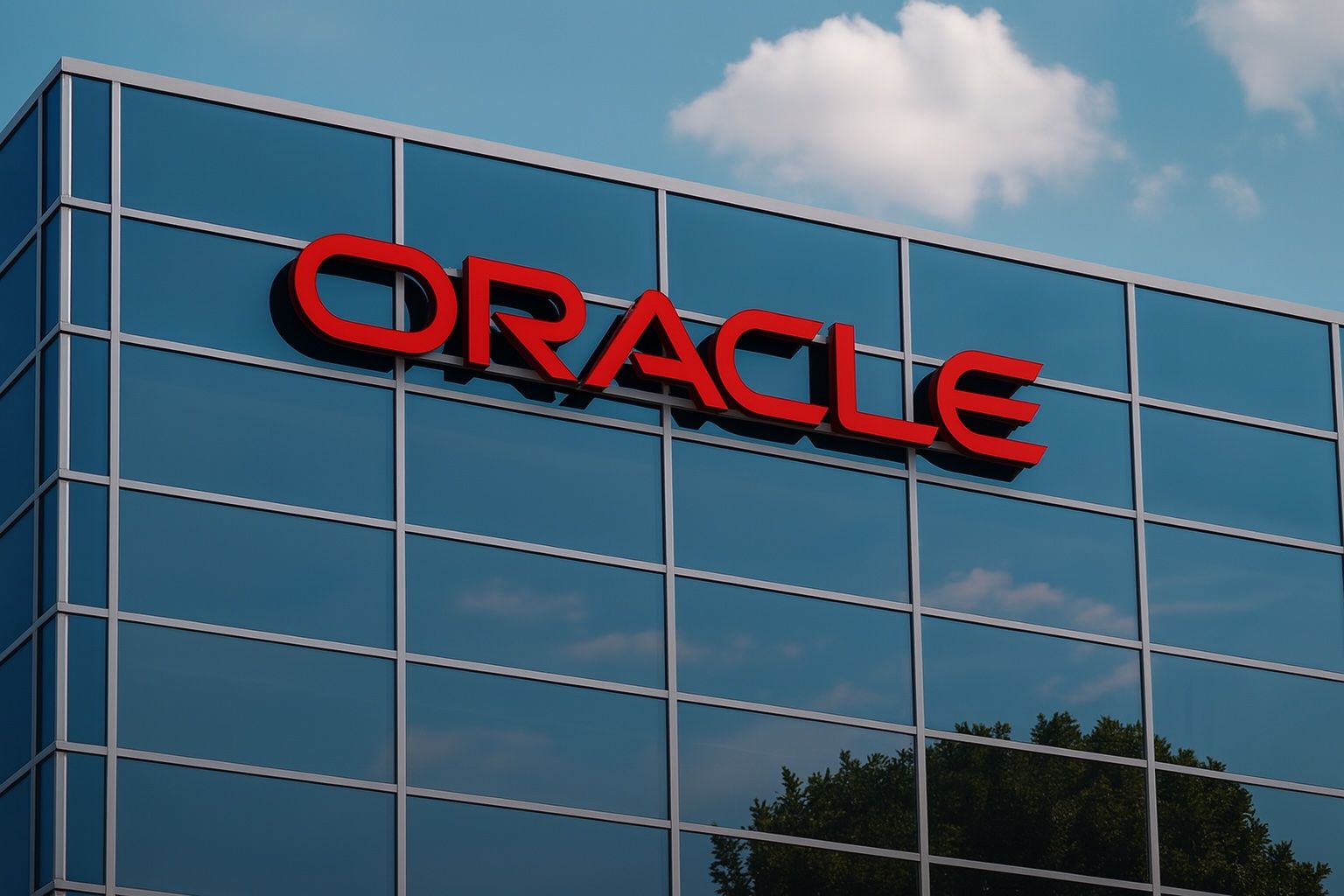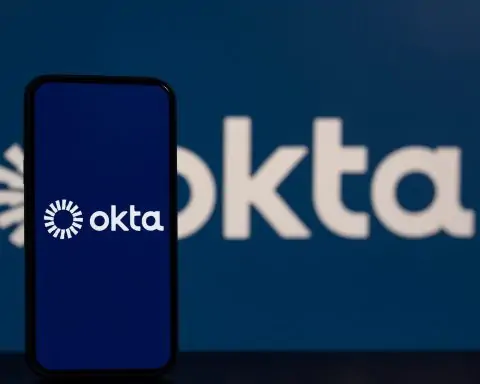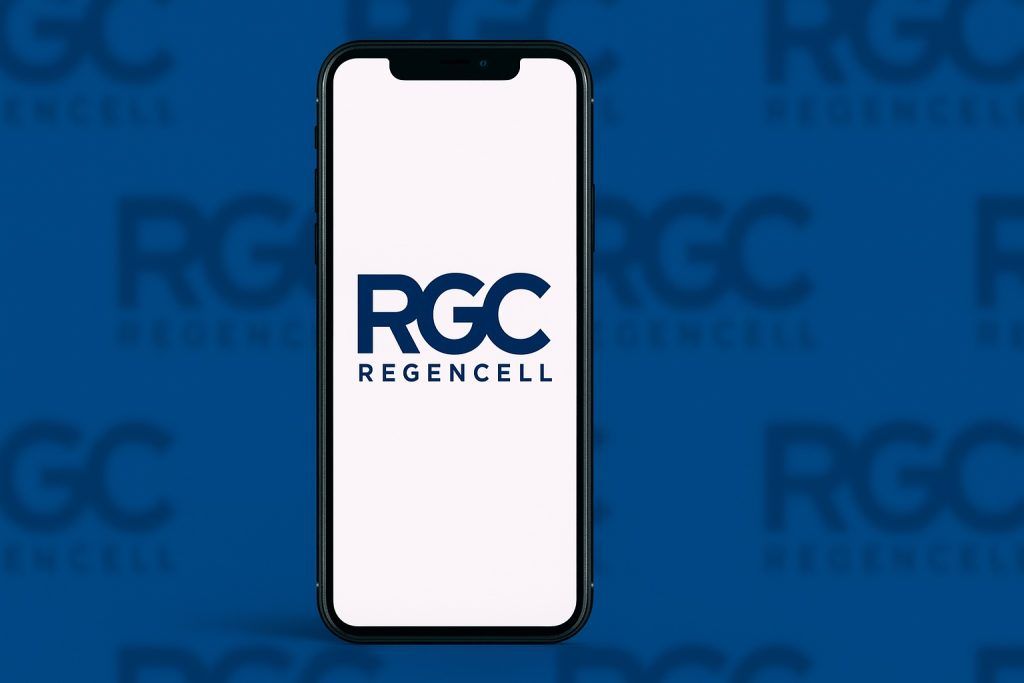- Stock Soars on AI Hype: Oracle (NYSE: ORCL) shares nearly doubled in 2025 amid excitement over its AI-focused cloud business. The stock jumped ~36–43% in a single day after an early September earnings report unveiled massive new cloud deals [1]. ORCL hit an all-time high around $345 in mid-September, briefly putting Oracle on the cusp of the $1 trillion market cap club [2]. As of early October 2025, the stock trades near ~$285–$295 (about an $820 billion valuation), up ~70–75% year-to-date [3] [4] – though it remains below its September peak after some profit-taking.
- Blockbuster AI Cloud Contracts: Oracle stunned the industry by signing several multi-billion-dollar cloud contracts tied to artificial intelligence. Most notably, OpenAI – maker of ChatGPT – reportedly agreed to spend a staggering $300 billion on Oracle Cloud over ~5 years starting in 2027 [5]. This is one of the largest cloud deals ever, turbocharging Oracle’s cloud backlog (remaining performance obligations) to $455 billion in Q1 FY2026 – a 359% year-over-year jump [6] [7]. Oracle is also in talks with Meta (Facebook’s parent) for another potential ~$20 billion AI cloud deal [8] [9]. In Q1 alone, Oracle signed four big cloud contracts (with OpenAI, Meta, Elon Musk’s xAI and others), driving an “astonishing” surge in demand for its cloud infrastructure [10] [11].
- Strong Earnings & Cloud Growth: Oracle’s latest quarterly results (Fiscal Q1 2026, quarter ended Aug. 31, 2025) beat expectations and showcased robust growth. Revenue hit $14.9 billion (up 12% YoY) with cloud revenue (infrastructure + SaaS) up 28% [12] [13]. Cloud Infrastructure-as-a-Service (OCI) revenue jumped 55% [14] as AI firms raced to secure computing capacity. CEO Safra Catz called it “an astonishing quarter” with unprecedented cloud demand, and said Oracle expects to sign several more multi-billion customers in coming months [15]. Oracle even raised its outlook: it now forecasts OCI revenue to surge 77% in the current fiscal year to $18 billion, and projects OCI sales reaching $144 billion by FY2029/2030 as AI uptake grows [16].
- Aggressive Investment (and Spending): To seize the AI cloud opportunity, Oracle is pouring money into expansion. In Q1 it spent $8.5 billion on capital expenditures (data centers, hardware, etc.), versus just $2.3 billion a year prior [17]. Oracle also raised $18 billion in bonds in September to help fund this buildout [18], pushing its total debt above $100 billion [19]. Founder Larry Ellison, now CTO, is betting big on high-performance cloud infrastructure (packed with NVIDIA GPUs) to cater to AI customers. Oracle’s heavy investments aim to ensure it can deliver on its huge backlog – but they’re squeezing near-term margins, which has drawn some concern from analysts.
- Leadership Shake-Up: In a significant management change, Oracle announced on Sep. 22 that Safra Catz (CEO since 2014) will step down from the chief executive role. She becomes Vice Chair of the Board, while two Oracle veterans – Clay Magouyrk (head of Oracle Cloud Infrastructure) and Mike Sicilia (head of Oracle’s industry applications) – were promoted to serve as co-CEOs [20] [21]. Executive Chairman Larry Ellison said the duo’s expertise in cloud and AI makes them ideal to “lead Oracle into the AI era,” praising their roles in transforming Oracle’s business [22] [23]. The surprise co-CEO move (similar to Netflix’s dual-CEO model) underscores Oracle’s commitment to its next generation of cloud leadership and the importance of AI to its future strategy.
- AI Innovations and Partnerships: Oracle is rolling out new AI-powered products across its portfolio. In early October, the company unveiled AI “agents” embedded in its Fusion Cloud Applications – essentially intelligent assistants that can autonomously perform complex business tasks (beyond simple chatbots) in areas like marketing, sales, and customer service [24]. Oracle’s NetSuite unit (cloud ERP for mid-sized firms) likewise introduced AI-driven updates to automate workflows. Looking ahead, Ellison teased a forthcoming Oracle AI Database service (to be announced at Oracle’s AI World conference in mid-October) that will let customers run popular AI models (like Google’s Gemini or OpenAI’s GPT) directly on Oracle’s databases to glean insights from their data [25]. Oracle is also expanding its ecosystem via partnerships – for example, teaming with EPAM Systems to help enterprises adopt Oracle’s cloud and AI services in multi-cloud environments [26], and working with IBM to integrate IBM’s Watsonx AI platform on OCI [27]. Even former competitors are now collaborators: Oracle struck deals with Microsoft, Amazon, and Google so that those clouds’ customers can run workloads on Oracle Cloud too, an approach that drove a +1,529% surge in Oracle’s multi-cloud database revenue in Q1 [28].
- Analyst Sentiment – Bulls vs. Bears: Wall Street’s take on Oracle is mixed. Many analysts are bullish, arguing Oracle has reinvented itself as a major AI cloud player and could be the next trillion-dollar tech titan [29]. Jefferies, for instance, cited Oracle’s “truly historic” AI-driven quarter and raised its price target to $360 [30]. The average analyst target sits around $330–$342 [31], implying upside if Oracle executes. However, some are more cautious. Oracle’s stock now trades around 40–55× earnings (a rich valuation well above its historical average and pricier than Microsoft at ~36×) [32] [33]. Skeptics warn that “not all AI bets can win.” A Redburn analyst made waves by calling Oracle’s huge OpenAI deal “very risky,” questioning whether OpenAI can even pay its $300B commitment in full [34]. That analyst set a Street-low $175 target, arguing the market may be overestimating Oracle’s AI opportunity and noting Oracle might need to borrow ~$100 billion over the next few years to build the required capacity [35]. The divergent views reflect a broader debate: can Oracle sustain its breakneck cloud growth and improve profitability, or is the current euphoria overdone?
- Market Sentiment and Recent News: Oracle’s stock has been volatile in early October. After its September surge, shares pulled back about 15–20% from highs, partly on broader market weakness but also due to a report raising profitability concerns. In the first week of October, a Bloomberg analysis suggested Oracle’s generative AI cloud business might be running on thin margins – as low as ~14% gross margin – given the immense costs of high-end chips and data centers [36] [37]. That report sparked a ~6–7% one-day drop in ORCL [38], reflecting some market jitters about whether Oracle’s booming sales will translate into equally booming profits. Still, the overall sentiment on Oracle remains largely positive, buoyed by its rapid cloud gains. As one analyst put it, Oracle’s “exceptional backlog” confirms its new role as a key enabler of AI in the enterprise – but now “it must deliver” on those lofty promises [39] [40].
Stock Performance: Skyrocketing on AI Hype
Oracle’s share price has been on a tear in 2025, handily beating the broader market and most tech peers. Riding a wave of AI optimism, ORCL is up roughly 70% year-to-date (as of early October) [41]. This surge far outpaces the ~16–25% gains of the average tech sector – and even leaves cloud heavyweights like Microsoft (+25% YTD), Alphabet (+32%), and Amazon (flat) in the dust [42]. The rally culminated in a stunning spike on September 10, 2025, when Oracle’s stock exploded by over 36% in a single session [43]. Shares hit an intraday high around $345.69 – an all-time record – after the company revealed eye-popping new AI cloud deals and raised its outlook.
That one-day jump, Oracle’s largest since the early 1990s, added nearly $234 billion to its market value [44]. It briefly valued Oracle around $913 billion [45] – putting it within striking distance of joining the elite “trillion-dollar club” alongside Apple, Microsoft, Alphabet, and Amazon. Co-founder Larry Ellison’s personal fortune swelled by an estimated $100 billion on paper during the frenzy [46], underscoring how dramatic the stock move was.
However, after this euphoria, Oracle’s stock has retraced from the peak. By October 7, 2025, ORCL was trading in the high-$280s, roughly 15% below its record – still extremely strong for the year, but indicating some consolidation. Part of the pullback came as investors digested the news and perhaps took profits; another part came from emerging questions about the sustainability of Oracle’s run-up. Notably, a mid-September Reuters analysis cautioned that Oracle’s valuation had become “stretched,” with the stock then over 33× forward earnings – a premium multiple fueled by AI excitement [47]. By early October, Oracle’s trailing price-to-earnings ratio hovered around the mid-40s [48], more than double its own 5-year average (~23×) and higher than most large-cap software peers. In short, the stock’s momentum has been extraordinary, but it’s also priced for a lot of future success.
Market sentiment remains generally bullish on Oracle, but volatile. For example, when a Bloomberg report on October 7 suggested Oracle’s cloud unit may have slimmer profit margins than expected (implying heavy costs for all those AI deals), ORCL shares fell about 6% that day [49]. Traders seemed spooked by the idea that Oracle might be “buying” its revenue growth at the expense of margins. (Bloomberg noted Oracle’s overall gross margin slid to 67.3% last quarter – its lowest in over a year – as the mix shifts to infrastructure [50].) Nonetheless, even after such dips, Oracle’s stock is still up tremendously in 2025. The AI gold rush narrative – that Oracle is a prime beneficiary of the massive corporate investment in AI – continues to attract investors. As Yahoo Finance quipped, Oracle’s momentum has left most of the “Magnificent Seven” tech giants “trailing significantly” this year [51], an almost unthinkable outcome before 2025. The question is whether Oracle can justify its lofty valuation by delivering equally lofty growth (and profits) in the coming quarters.
AI Cloud Contracts: Giant Deals Fuel Backlog Boom
Oracle’s surge has been driven in large part by blockbuster cloud deals tied to the AI boom. In its fiscal Q1 (Jun–Aug 2025), Oracle announced it had signed four enormous cloud infrastructure contracts, each worth billions of dollars [52]. Safra Catz revealed these deals were struck with “three different customers” – all hungry for computing power to train advanced AI models [53]. This hints that a couple of the contracts were with the same client or related entities. So who are these mystery clients?
One known customer is OpenAI, the high-profile AI lab behind ChatGPT. In a jaw-dropping scoop, The Wall Street Journal reported (and Oracle has not denied) that OpenAI agreed to buy $300 billion of cloud capacity from Oracle over roughly five years [54]. The deal would start in 2027 and make Oracle a core provider of the vast computing resources OpenAI needs to train next-generation AI systems. To put the size in perspective, $300 billion is larger than Oracle’s entire market cap just a couple years ago, and it’s an order of magnitude bigger than typical cloud contracts. If confirmed, this is one of the largest tech deals in history – signaling that Oracle Cloud has arrived in a big way.
Another likely customer is xAI, Elon Musk’s new AI startup (Musk, a close friend of Ellison, reportedly chose Oracle to power xAI’s needs) [55]. And per Reuters, Oracle is also in talks with Meta Platforms for a multi-year AI cloud agreement worth about $20 billion [56]. Meta, which runs AI-heavy services like Facebook and Instagram, already uses other clouds (it has major deals with Azure and others), but is seeking additional capacity amid an AI arms race. If Oracle clinches Meta, it would further validate Oracle as a top-tier cloud option for AI workloads.
These mega-deals have turbocharged Oracle’s backlog of orders. Oracle’s remaining performance obligations (RPO) – essentially the value of contracted future revenue – ballooned to $455 billion as of Q1 FY26 [57]. That’s up 359% from about $99 billion a year earlier, an almost unheard-of jump for a company of Oracle’s size. It appears that about $317 billion of the increase came from just one quarter [58] – reflecting the new OpenAI contract (much of which is booked years out) plus other large deals. Oracle’s RPO now eclipses the known backlogs of even larger cloud rivals, a fact one analyst called a “seismic shift” toward AI-centric deals [59]. Indeed, Oracle’s reported backlog is now bigger than the annual revenues of Microsoft or Amazon. This huge order book gives Oracle exceptional visibility into future growth – if those customers ultimately pay and use the capacity.
Oracle’s executives are understandably ebullient. “It was an astonishing quarter,” Safra Catz said of Q1, noting that demand for Oracle Cloud Infrastructure (OCI) “continues to build” rapidly [60]. “Over the next few months, we expect to sign up several additional multi-billion-dollar customers and RPO is likely to exceed half-a-trillion dollars,” Catz added [61]. In other words, Oracle thinks this is just the beginning – more AI players and possibly large enterprises could lock in huge cloud commitments with Oracle soon.
What’s driving this land rush? In the AI era, compute capacity is king. Leading AI developers and enterprises are racing to secure enough GPUs, servers and cloud resources to train advanced models – lest they fall behind. Oracle, once seen as a cloud also-ran, has strategically positioned its OCI as a high-performance, cost-effective alternative to Amazon Web Services, Microsoft Azure, or Google Cloud. Oracle has invested heavily in NVIDIA GPU clusters and ultra-fast networking, aiming to make OCI a go-to platform for AI training and inference. The company also touts certain cost advantages (like not charging for data movement between its data centers) which can appeal to AI customers dealing with massive datasets.
Importantly, Oracle isn’t trying to unseat the Big Three clouds outright – instead, it’s partnering with them. Oracle has deals with AWS, Azure, and Google Cloud to effectively blend services: e.g. letting customers run Oracle’s database and OCI services inside other clouds [62]. In Q1, revenue from these cross-cloud partnerships surged 16-fold year-on-year [63], albeit off a small base. Ellison has described Oracle as the “fourth hyperscaler,” a dark horse that’s leveraging alliances and technical strengths (databases, enterprise apps) to carve out a unique spot in the cloud market [64].
The blockbuster OpenAI deal is also a bit of an ironic twist: OpenAI’s primary backer and cloud provider is Microsoft (Azure), yet OpenAI still found it necessary to buy additional capacity from Oracle [65]. This suggests even Microsoft’s cloud alone wasn’t sufficient for OpenAI’s ambitions, and it shows a willingness among AI firms to diversify suppliers. “Companies such as OpenAI and xAI [are] aggressively spending to secure the massive computing capacity needed to stay ahead in the AI race,” Reuters noted [66]. Oracle is capitalizing on this urgency.
Of course, signing huge contracts is one thing – fulfilling them profitably is another. Some observers point out that Oracle likely offered very competitive pricing (perhaps razor-thin margins) to win these deals from under the noses of AWS/Azure. There are also execution risks: Oracle must rapidly build out data centers, source enough chips, and actually deliver the performance promised. The backlog can shrink if customers cancel or if usage falls short. These are longer-term concerns, but they temper the otherwise extremely bullish story of Oracle’s newfound cloud momentum.
Financial Results & AI Investment
Oracle’s recent financial performance has been solid, even aside from the hype. In fiscal Q1 2026 (reported Sept. 2025), Oracle’s revenue grew 12% year-over-year to $14.9 billion [67]. This marked an acceleration from the single-digit growth rates Oracle had been posting in prior years. The big driver was cloud services. Oracle’s cloud revenue (which includes both cloud infrastructure and cloud-based applications) jumped 28% in Q1 to $7.2 billion [68] – nearly half of total sales. By contrast, Oracle’s traditional software licensing business was slightly down, reflecting the ongoing shift to cloud subscriptions [69].
Digging deeper, the Oracle Cloud Infrastructure (OCI) piece was the standout: OCI revenue surged 55% YoY to $3.3 billion [70]. This encompasses things like computing, storage, and networking services – and it clearly benefited from those new AI contracts and higher usage by data-hungry customers. Oracle’s cloud applications (SaaS) business – which includes its Fusion ERP, NetSuite, and other software delivered via cloud – grew about 11%, a respectable rate driven by demand for enterprise software in the cloud [71]. Notably, Oracle’s Fusion Cloud ERP and NetSuite ERP suites each hit $1 billion in quarterly revenue for the first time, both growing mid-teens percentages [72], as Oracle continues to challenge the likes of SAP in the enterprise resource planning market.
On the profit side, Oracle’s Q1 GAAP net income was $2.9 billion, with earnings of $1.01 per share (down ~2% YoY) [73] [74]. On an adjusted basis, Oracle earned $1.47 per share (up 6%). So profitability is growing more slowly than revenue – a trend that makes sense given Oracle’s heavy spending and the lower initial margins of cloud deals. Oracle’s operating margin has been under a bit of pressure: its gross margin of ~67% last quarter was the lowest in over a year [75], and operating margins have compressed as cloud revenue (which currently carries lower margins than legacy software) becomes a bigger mix.
Oracle’s leadership doesn’t seem fazed by the near-term margin dip; they view it as an investment phase. The company is essentially racing to build capacity to fulfill those monster contracts. On the Q1 call, Safra Catz explicitly acknowledged Oracle is revising its financial plans upward for cloud and that massive infrastructure growth is needed [76]. Oracle’s own guidance implies that by fiscal 2028–2029, OCI will be delivering over $100 billion in annual revenue [77] – an almost 8× jump from current levels in just four years. To get there, Oracle is spending unprecedented sums on capital projects.
In Q1 alone, Oracle’s capital expenditures were $8.5 billion [78]. For context, that one quarter of capex is nearly as much as Oracle spent in all of fiscal 2023. Much of it likely went toward securing pricey hardware like NVIDIA’s AI chips (A100/H100 GPUs), building new data center capacity, and perhaps pre-paying for components to lock in supply. Oracle also raised $18 billion in debt financing in September [79] – a huge bond issuance – signaling that it’s willing to lever up its balance sheet to fund growth. By October, Oracle’s long-term debt load exceeded $100 billion [80], which is quite high (Oracle was traditionally more cash-rich and low-debt before its cloud pivot and big acquisitions like Cerner). The company does still generate strong cash flow ($21.5B operating cash flow over the past 12 months) [81], which helps support these investments, and it continues to pay dividends ($0.50 quarterly dividend, which was reaffirmed for Oct. 2025) [82].
Ellison and Catz argue that these investments will pay off handsomely. Oracle touts that much of the revenue in its 5-year forecast is “already booked” in the RPO backlog [83] – implying a level of guaranteed future income. They see OCI scaling enormously as AI drives “hyper-growth,” and they believe Oracle has unique tech advantages (like its fast networking, security, and database expertise) that will allow it to grab share from bigger rivals. Ellison has been particularly enthusiastic about Oracle’s multi-cloud strategy and new products: “Multicloud database revenue from Amazon, Google and Microsoft grew at the incredible rate of 1,529% in Q1,” he highlighted [84], illustrating how Oracle is monetizing partnerships with erstwhile competitors. At the upcoming Oracle AI World conference (Oct. 2025), Ellison will unveil the Oracle AI Database, which he describes as a “revolutionary” cloud service enabling companies to apply advanced AI models (from OpenAI, Google’s DeepMind, etc.) directly to their Oracle database data [85]. “AI changes everything,” Ellison proclaimed, saying these new AI cloud services will “dramatically” boost cloud usage in coming years [86].
Yet, alongside the optimism, some analysts urge caution regarding Oracle’s financial trajectory. The core issue: margins and execution. Running data centers for AI workloads can be extremely expensive – high-power chips, electricity, cooling, fiber optics – and initially, Oracle may be pricing deals aggressively to win market share. According to Bloomberg’s sources, Oracle’s generative AI cloud contracts might carry only around a 14% gross margin [87], versus the 60%+ margins Oracle enjoys in its legacy software business. If true, that means these deals won’t contribute much profit until Oracle achieves huge scale or higher efficiency. A TipRanks analyst noted that Oracle’s cloud unit likely has “single-digit margins” currently, and warned that profits may not scale as fast as revenue, which could put Oracle’s stretched valuation into question [88] [89]. The same analyst pointed out Oracle is now trading at ~55× earnings – a significant premium – so any faltering in growth or profitability could hit the stock hard [90]. In essence, Oracle’s finances are at an inflection: the company is sacrificing margin now for hoped-for dominance later. Investors will be watching closely whether Oracle can eventually improve its cloud margins (like AWS and Azure did over time) or whether the costs of chasing AI business remain a drag on earnings.
New AI Initiatives and Leadership Changes
Oracle’s strategy in 2025 has been “all-in” on cloud and AI – not just in infrastructure, but across its software offerings. In the first week of October, Oracle announced new AI-powered features in its flagship business applications. Specifically, Oracle is embedding AI Agents into its Fusion Cloud Applications suite (which includes ERP, CX, HR and other modules) [91]. These AI agents act like intelligent digital assistants capable of automating multi-step tasks and decision-making within workflows. For example, in Oracle’s customer service software, an AI agent might autonomously handle a customer inquiry from start to finish; in marketing, an agent could analyze data and execute a targeted campaign, all on its own. Oracle is positioning these as more advanced than typical chatbots – they don’t just answer questions but can take actions on behalf of users. For Oracle’s customers, the appeal is that these built-in AI tools could boost productivity without needing to adopt external AI platforms. “Agents embedded directly within familiar applications could drive significant productivity gains,” noted a Zacks analyst of the new feature [92]. Oracle’s focus on “agentic AI” mirrors moves by competitors: Microsoft, for instance, is rolling out its Copilot AI across Office 365 and Dynamics apps, while Salesforce has its Einstein GPT assistant. Oracle’s message is that it won’t be left behind – its apps will also have cutting-edge AI infused throughout.
In the cloud infrastructure realm, Oracle’s aforementioned upcoming AI Database is another innovation to watch. By allowing customers to bring AI models to their data (rather than having to move data to an AI service), Oracle could differentiate itself in enabling enterprise AI applications. This ties into Oracle’s core strength with databases – an area where it still leads the market. If successful, the AI Database could further entrench Oracle’s database customers by giving them easy on-ramps to AI analytics.
Oracle has also been active in forming partnerships to bolster its AI and cloud credibility. We’ve mentioned Oracle’s deepening collaborations with hyperscalers (Microsoft, Amazon, Google). Beyond those, Oracle in October expanded a partnership with EPAM Systems, a global IT services firm, to help enterprises implement Oracle Cloud Infrastructure and AI services in multi-cloud environments [93]. The idea is to leverage EPAM’s expertise to accelerate OCI adoption for customers in industries like healthcare, finance, and retail. Oracle’s North America cloud executive David Hicks said this will “make it easier for our joint customers to leverage cloud and AI services to streamline operations and make data-driven decisions.” [94] Similarly, Oracle has partnered with IBM to make IBM’s Watsonx AI models available on Oracle Cloud [95], giving Oracle clients access to another set of AI capabilities. And interestingly, Oracle even has a deal with NATO’s tech agency (NCIA) – announced right after Q1 earnings – to migrate some of NATO’s critical systems to Oracle Cloud [96]. That win provides a prestige boost (and a foot in the door for defense-related cloud work).
On the corporate front, the leadership transition at Oracle is a noteworthy development coinciding with this strategic shift. After 11 years as sole CEO, Safra Catz is handing over day-to-day control to a pair of successors. In late September, Oracle named Clay Magouyrk and Mike Sicilia as co-Chief Executives [97]. This move caught some by surprise, as co-CEO arrangements are relatively rare (though not unheard of – Oracle cites Netflix, Salesforce in the past, and others as precedents [98]). The rationale appears to be leveraging two complementary skill sets: Magouyrk built Oracle’s cloud infrastructure from scratch and is seen as the technical mastermind behind OCI’s success [99] [100]. Sicilia, meanwhile, has led Oracle’s industry-specific applications (via Oracle’s acquisition of Primavera and work in verticals like healthcare, finance, etc.) and drove the integration of AI features into those apps [101]. In announcing their promotion, Larry Ellison praised Clay for making Oracle’s Gen2 Cloud a “high-performance, secure, cost-efficient platform” and Mike for modernizing Oracle’s industry apps with AI – crediting their commitments to AI as having “paid off.” [102]
Safra Catz isn’t leaving Oracle – as Executive Vice Chair she’ll still be involved in guiding strategy alongside Ellison [103]. Ellison (age 81) remains Chairman and CTO, and by all accounts, deeply involved in product direction and big customer wins. But the co-CEO structure signals a passing of the torch to the next generation of leadership that has proven its mettle in cloud and AI projects. “Oracle’s technology and business have never been stronger… at this time of strength is the right moment to pass the CEO role to the next generation,” Catz said, congratulating Clay and Mike [104]. The market generally welcomed the news – Oracle’s stock didn’t react negatively, as the promotions were seen as logical (both Magouyrk and Sicilia are well-regarded internally).
Having two CEOs does introduce some execution risk – clear division of responsibilities will be key. Oracle says the two will “continue to collaborate” on building out Oracle’s AI-powered cloud offerings [105], with Clay presumably focused on infrastructure and Mike on applications. As Oracle navigates its rapid growth phase, this leadership team will be under pressure to deliver on the hype – turning those huge backlog numbers into real revenue, and keeping Oracle’s many moving parts (cloud, database, applications, hardware) all executing in harmony.
Competitive Landscape: Oracle vs. the Tech Titans
Oracle’s resurgence comes as the race in cloud computing and enterprise AI intensifies. The company is now often mentioned in the same breath as Amazon, Microsoft, and Google – the three giants that dominate the cloud market with roughly 65% combined share [106]. For years, Oracle’s OCI was a distant also-ran in cloud infrastructure, with low single-digit market share. But by aligning its strategy to the AI trend and cooperating with the big players (rather than competing head-on for every workload), Oracle has effectively found a niche where it can shine.
Still, Oracle faces formidable competition. Microsoft Azure is not only a cloud leader but also deeply intertwined with OpenAI (Microsoft invested billions in OpenAI and provides the bulk of its cloud needs). It’s a testament to Oracle’s offering that OpenAI chose to split some work with Oracle, but Azure remains a heavyweight, especially in AI services and enterprise integrations. Microsoft is deploying AI features across its products (from GitHub’s Copilot for coding to Microsoft 365 Copilot for Office apps) which compete with Oracle’s vision of AI agents in enterprise apps. Microsoft’s stock has also benefited from AI enthusiasm this year, though not as dramatically as Oracle’s.
Amazon Web Services (AWS), the cloud market leader, has a broad array of AI and machine learning services (SageMaker, custom chips like Trainium, Bedrock for AI models, etc.) and an enormous global infrastructure. While AWS hasn’t publicized deals as large as Oracle’s OpenAI win, Amazon’s strategy is to offer a “supermarket” of AI tools and remain the default choice for many businesses. Oracle’s challenge will be convincing more customers that OCI’s specialized AI performance (and perhaps cost benefits) outweigh the one-stop convenience of AWS. It helps Oracle that some customers (like Meta, reportedly) don’t want to rely on a single provider and are open to a second source.
Google Cloud is also vying for AI dominance – Google has cutting-edge AI research (DeepMind, Google Brain) and is launching its own advanced models (such as Gemini, an upcoming rival to GPT-4). Intriguingly, Oracle has aligned with Google such that Google’s AI models can run on Oracle Cloud [107]. This suggests a cooperative angle: Google benefits by getting its AI used more widely, and Oracle benefits by being able to offer customers top-tier AI options. It’s a bit of “the enemy of my enemy is my friend,” as both Oracle and Google want to chip away at AWS/Microsoft’s lead.
Beyond cloud infrastructure, Oracle also competes with enterprise software rivals. SAP, for instance, is a direct competitor in ERP (accounting, supply chain, etc.) and database software. SAP has been transitioning its customers to its cloud platform and incorporating AI (SAP recently announced a digital assistant called Joule for its software). Oracle’s Fusion ERP growth (17% this quarter) indicates it’s taking some market share in cloud ERP [108], possibly from SAP’s installed base, by offering an AI-enhanced, unified suite (especially after Oracle’s 2022 acquisition of Cerner bolstered its industry solutions). Oracle will tout that its apps and infrastructure can work together seamlessly, whereas SAP often partners with AWS/Azure for cloud hosting.
In customer relationship management (CRM) software, Oracle’s competitors include Salesforce. Salesforce’s core focus is CRM and marketing automation, where Oracle also has offerings (Oracle CX cloud). Salesforce has been very aggressive in pushing AI (Einstein GPT, various AI features in Slack and sales tools) to maintain its lead. Oracle’s strategy differs since Oracle can offer the underlying database and infrastructure along with apps – a full stack – whereas Salesforce is purely a SaaS player that itself relies on AWS/GCP for infrastructure. It remains to be seen if Oracle can win over customers by pitching an integrated cloud+applications+AI stack as more efficient or secure.
Even IBM could be considered a competitor in some realms (IBM has its own cloud and AI initiatives, though smaller scale), but notably IBM chose to partner by bringing Watsonx to Oracle Cloud [109], indicating Oracle’s growing clout in AI circles.
One area all these companies are converging on is AI cloud services – providing the platforms on which the next generation of AI applications will run. Oracle’s bold claim is that it’s now a top-tier “AI cloud” provider, not just a legacy database firm. By the numbers, Oracle’s cloud business is still smaller than AWS/Azure/GCP; but Oracle is growing faster at the moment and is landing outsized deals. The true test will be if Oracle can diversify its AI customer base (beyond OpenAI and a few others) and sustain growth when possibly every large tech firm is vying for those same AI workloads.
For now, Oracle is enjoying a bit of an underdog-turns-contender narrative. Its stock’s outperformance in 2025 shows that investors see Oracle in a new light – no longer just an old-school enterprise software vendor, but potentially a key player in the AI revolution. As one industry observer put it, Oracle has transformed “from a legacy database vendor into an AI cloud leader” – a “dark-horse” candidate to stand alongside AWS, Microsoft, and Google in the cloud arena [110] [111]. That’s a remarkable shift for a company that many had written off in the cloud wars.
Analyst Ratings and Outlook
Given Oracle’s dramatic developments, Wall Street analysts have been updating their models and price targets en masse. The consensus analyst rating for ORCL in October 2025 is between a Buy and a Hold – effectively a cautiously optimistic stance. According to TipRanks, 30 analysts currently assign Oracle an average rating of “Moderate Buy,” with many praising its cloud pivot but a few flagging risks [112]. The price targets tell a story of high hopes but wide uncertainty: the average target is around $330–$342 [113], about 15% above recent trading levels. However, individual targets range from as high as $400 on the bullish end [114] (a level that would imply Oracle regaining record highs and then some) to as low as $175 on the bearish end [115] (implying a sharp pullback if AI plans falter). This $400 high target likely comes from particularly bullish analysts – for example, Jefferies’ Brent Thill, who reiterated a Buy and hiked his target from $270 to $360 after the Q1 earnings, citing Oracle’s “truly awesome” AI-driven quarter and backlog growth [116]. Some other banks reportedly went even higher, into the $370+ range [117]. Bulls argue that Oracle’s massive backlog and accelerating cloud revenues haven’t yet been fully reflected in its stock – if Oracle even executes part of its 5-year plan, the company’s earnings could inflect much higher, potentially justifying even today’s rich valuation.
On the flip side, the low-end $175 target was issued by Redburn, whose analyst voiced skepticism that OpenAI (a still-unprofitable startup) can utilize or pay $300B in cloud services as planned [118]. That analyst described Oracle’s AI deal bonanza as “overestimated” by the market and fretted that Oracle may end up having to finance a lot of capacity with debt, only to see utilization fall short [119]. Similarly, a recent TipRanks commentary labeled Oracle’s stock as essentially priced for perfection, “trading on the best-case scenario, leaving little room for error” [120]. The author, Bernard Zambonin, warned that “not all AI bets can win” and rated Oracle a Hold, pending evidence that margins and execution will meet the hype [121]. He notes that Oracle’s valuation multiples have been re-rated dramatically higher (now closer to high-growth cloud peers), so any disappointment – whether a slowdown in cloud sign-ups, delays in delivering new data centers, or an unexpected economic headwind – could lead to an outsized stock reaction.
What do forecasts say about Oracle’s near and long-term future? For the current fiscal year (FY2026 ending May 2026), analysts project Oracle’s total revenue will rise on the order of ~15–16% [122]. Oracle’s own guidance for OCI (+77%) and continued SaaS growth supports that, and the Wall Street consensus revenue estimate sits around $66.8 billion [123]. Earnings per share for FY2026 are expected to be roughly flat to slightly up (around $6.77 EPS) [124], as those high expenses eat into profit growth. So in the short term, Oracle might not show blockbuster earnings growth – the story is more about top-line/cloud momentum and building for the future.
It’s in the long term that forecasts get truly ambitious. Oracle management’s targets imply that by FY2030, OCI alone could be a $100B+ revenue business [125]. If you add Oracle’s sizable software business on top, total revenues could plausibly double or more within five years if all goes well. Some bulls have started to speculate that Oracle could eventually become the next member of the trillion-dollar market cap club – something unthinkable a few years ago. Indeed, during the post-earnings rally, Oracle briefly flirted with that territory (crossing $900B). For Oracle to sustain a trillion-dollar valuation, it will need to achieve roughly $15–20B in annual profits (assuming market valuations stabilize). That could happen if Oracle’s revenue growth continues and margins normalize upward as cloud economics improve.
However, plenty of analysts urge a grounded outlook. They emphasize monitoring a few key indicators: cloud consumption trends (are customers actually using what they’ve contracted? Any signs of cloud spend deceleration will be a red flag), profit margins (gross and operating margin progression over coming quarters will show if Oracle can make money on AI deals), and competition (how rivals respond – e.g., price cuts by AWS/Azure, new tech that leapfrogs Oracle’s offerings, etc.). Also, any news on the OpenAI deal will be scrutinized – if that partnership flourishes, it could lead to more mega-deals; if OpenAI hits technical or financial snags, Oracle’s backlog might look less solid.
In summary, the consensus is that Oracle is on a very promising trajectory, but with big execution challenges ahead. The company’s bold forecasts and recent wins have given even long-time Oracle skeptics reason to take note. As Reuters put it, Oracle’s AI-cloud success has “propelled Larry Ellison closer to the top of the world’s richest” list and put Oracle on track to potentially join the tech industry’s top elite [126] [127]. Now, it’s all about follow-through. Oracle has to prove that its transformation from a legacy database Goliath to a cutting-edge cloud contender is not only real but sustainable. If it can, there may indeed be room for a “Fourth Cloud” giant – and Oracle’s 2025 gamble on AI would go down as a historic masterstroke. If not, the coming years could expose whether Oracle overextended in pursuit of AI glory. In the meantime, investors and customers alike will be watching Oracle’s next moves intently, as the AI cloud raceenters a critical phase.
Sources:
- Reuters – Oracle soars on AI cloud gains… (Sep. 10, 2025) [128] [129] [130]
- Reuters – Oracle eyes $20 billion AI cloud deal with Meta… (Sep. 19, 2025) [131] [132]
- Oracle Investor Press Release – Q1 FY2026 Results (Sep. 9, 2025) [133] [134]
- Oracle Investor Press Release – (Safra Catz quote on Q1 deals/backlog) [135]
- Oracle Investor Press Release – (Larry Ellison quote on AI Database) [136]
- Oracle News Release – Clay Magouyrk & Mike Sicilia named co-CEOs (Sep. 22, 2025) [137] [138]
- Reuters – More companies adopt co-CEO structure (Sep. 30, 2025) [139]
- Zacks via Yahoo/FinViz – Oracle Unveils AI Agents in Cloud Apps… (Oct. 7, 2025) [140] [141]
- TS2.tech – Oracle’s $300B AI Cloud Gamble… (Oct. 6, 2025) [142] [143]
- TipRanks – ‘Not All AI Bets Can Win,’ Warns Analyst… (Oct. 2025) [144] [145]
- Bloomberg via Yahoo – Oracle’s Cloud Margins Worse Than Expected (Oct. 7, 2025) [146]
- EPAM Press Release – EPAM and Oracle expand AI Cloud collaboration (Oct. 7, 2025) [147]
References
1. www.reuters.com, 2. www.reuters.com, 3. ts2.tech, 4. finviz.com, 5. www.reuters.com, 6. investor.oracle.com, 7. www.reuters.com, 8. www.reuters.com, 9. www.reuters.com, 10. investor.oracle.com, 11. www.reuters.com, 12. investor.oracle.com, 13. finviz.com, 14. investor.oracle.com, 15. investor.oracle.com, 16. investor.oracle.com, 17. ts2.tech, 18. ts2.tech, 19. ts2.tech, 20. www.oracle.com, 21. www.reuters.com, 22. www.oracle.com, 23. www.oracle.com, 24. finviz.com, 25. investor.oracle.com, 26. www.prnewswire.com, 27. ts2.tech, 28. investor.oracle.com, 29. ts2.tech, 30. finance.yahoo.com, 31. finance.yahoo.com, 32. finviz.com, 33. www.tipranks.com, 34. ts2.tech, 35. ts2.tech, 36. www.bloomberg.com, 37. www.bloomberg.com, 38. finance.yahoo.com, 39. seekingalpha.com, 40. www.futuriom.com, 41. ts2.tech, 42. finviz.com, 43. www.reuters.com, 44. www.reuters.com, 45. www.reuters.com, 46. www.reuters.com, 47. www.reuters.com, 48. finviz.com, 49. finance.yahoo.com, 50. www.bloomberg.com, 51. finviz.com, 52. investor.oracle.com, 53. investor.oracle.com, 54. www.reuters.com, 55. www.reuters.com, 56. www.reuters.com, 57. investor.oracle.com, 58. ts2.tech, 59. ts2.tech, 60. investor.oracle.com, 61. investor.oracle.com, 62. www.reuters.com, 63. www.reuters.com, 64. ts2.tech, 65. www.reuters.com, 66. www.reuters.com, 67. investor.oracle.com, 68. investor.oracle.com, 69. investor.oracle.com, 70. investor.oracle.com, 71. investor.oracle.com, 72. investor.oracle.com, 73. investor.oracle.com, 74. investor.oracle.com, 75. www.bloomberg.com, 76. investor.oracle.com, 77. investor.oracle.com, 78. ts2.tech, 79. ts2.tech, 80. ts2.tech, 81. investor.oracle.com, 82. investor.oracle.com, 83. investor.oracle.com, 84. investor.oracle.com, 85. investor.oracle.com, 86. investor.oracle.com, 87. www.bloomberg.com, 88. www.tipranks.com, 89. www.tipranks.com, 90. www.tipranks.com, 91. finviz.com, 92. finviz.com, 93. www.prnewswire.com, 94. www.prnewswire.com, 95. ts2.tech, 96. www.tipranks.com, 97. www.reuters.com, 98. www.reuters.com, 99. www.oracle.com, 100. www.oracle.com, 101. www.oracle.com, 102. www.oracle.com, 103. www.oracle.com, 104. www.oracle.com, 105. www.oracle.com, 106. www.reuters.com, 107. investor.oracle.com, 108. investor.oracle.com, 109. ts2.tech, 110. ts2.tech, 111. ts2.tech, 112. public.com, 113. www.tipranks.com, 114. www.tipranks.com, 115. www.tipranks.com, 116. finance.yahoo.com, 117. www.investing.com, 118. ts2.tech, 119. ts2.tech, 120. www.tipranks.com, 121. www.tipranks.com, 122. finviz.com, 123. finviz.com, 124. finviz.com, 125. investor.oracle.com, 126. www.reuters.com, 127. www.reuters.com, 128. www.reuters.com, 129. www.reuters.com, 130. www.reuters.com, 131. www.reuters.com, 132. www.reuters.com, 133. investor.oracle.com, 134. investor.oracle.com, 135. investor.oracle.com, 136. investor.oracle.com, 137. www.oracle.com, 138. www.oracle.com, 139. www.reuters.com, 140. finviz.com, 141. finviz.com, 142. ts2.tech, 143. ts2.tech, 144. www.tipranks.com, 145. www.tipranks.com, 146. www.bloomberg.com, 147. www.prnewswire.com







